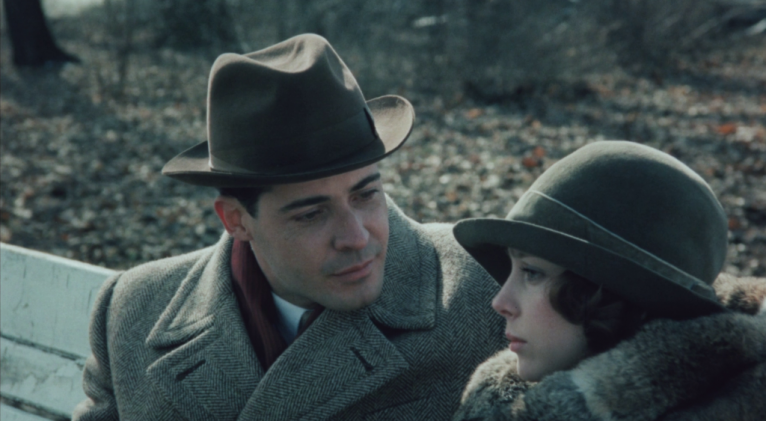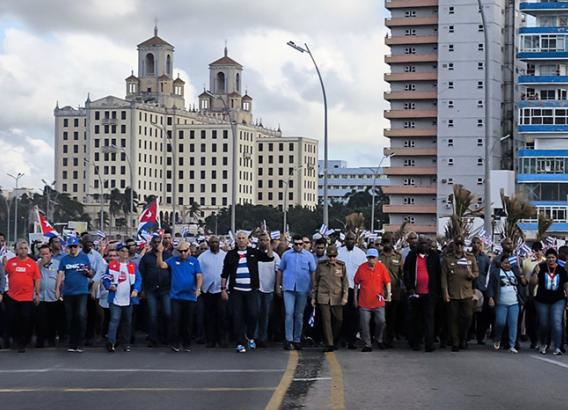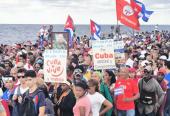Capablanca’s Return
especiales

The renewal of historic films carried out by the Cuban Institute of Cinematographic Art and Industry (ICAIC) institutes a fundamental pillar in the preservation of the national film heritage. By bringing key works of Cuban cinema back to life, it guarantees not only the visual memory of past generations, but also the access of future generations to creations that are part of the nation's cultural identity. It’s a commitment to history and art, which requires resources, specialized knowledge, and institutional will. In this endeavor, the recent presentation of the restored copy of the film Capablanca marks a significant milestone.
The ICAIC Digital Laboratory website reports that on Monday, May 5, 2025, a screening of the restored film took place at Titón Room on the fifth floor of the institution's headquarters, in the presence of its director, Manuel Herrera, winner of the 2022 National Film Award. Thirty-eight years after its production, this work of great symbolic and cinematic value returns with renewed splendor thanks to a rescue effort spanning two continents. The film, a 1987 Cuban-Soviet co-production, had suffered deterioration in its Spanish-language copies, which prevented its proper preservation.
The possibility of recovering Capablanca started in September 2024, when the original reels, in excellent condition, were located in the State Fund of the Russian Federation (Gosfilmofond). This was the result of the renewal of historical ties between the film industries of Cuba and Russia, undertaken by ICAIC. On that occasion, some 70 Cuban titles were also found, but Capablanca's work was largely the focus of the effort due to its symbolic value and the complexity of its restoration.
The process involved close collaboration between institutions in both countries. From the Russian-dubbed copy delivered by Gosfilmofond and the original sound archives held at ICAIC, the meticulous restoration work began. The ICAIC Digital Laboratory, the International School of Film and Television (EICTV), and experienced specialist Gerónimo Labrada led the technical process to return the film to optimal running conditions.
Labrada and his team at EICTV took on the digitization of the original tapes held in the vaults of the ICAIC Digital Laboratory. Once this step was completed, the complex task of synchronizing the image with the Spanish audio file began, ensuring both visual and audio fidelity. The result reportedly shows excellent image quality, although synchronization details will still be adjusted based on Manuel Herrera's own observations.
During the presentation, the director expressed his excitement at the achieved result, noting that he had not seen the complete film since the 1990s, when it was transferred to VHS format. That version, moreover, had been cut, so it was shown incomplete. Reuniting with his work, restored and almost complete, has been a deeply moving experience for him.
Capablanca tells an episode in the life of the brilliant Cuban chess player José Raúl Capablanca, world champion between 1921 and 1927, known in his time as "The Mozart of Chess" and "The Chess Machine." The action takes place in 1925, a period of personal transition for the maestro, and the film sensitively addresses the dilemmas of its protagonist, from a perspective that transcends the biographical to approach the existential and symbolic side.
The restoration of this work not only returns a key piece of Cuban cinema to the big screen, but also reaffirms ICAIC's vow to the country's cultural memory. In a context where technological obsolescence and the passage of time threaten audiovisual archives, efforts like this are vital. The recovery of Capablanca is a victory of cultural and technical will, and of course a priceless gift for new generations of viewers and filmmakers.
Translated by Amilkal Labañino / CubaSi Translation Staff














Add new comment